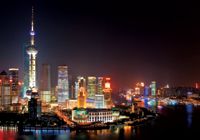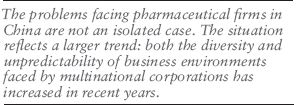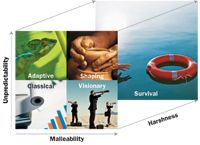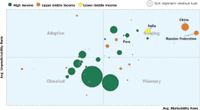China and the Emerging Markets Challenge
Chinese policies are to pose new opportunities and challenges for Big Pharma companies active in the country.
This month signals the arrival of new political leadership in China, as President Xi Jinping and his six colleagues on the ruling Politburo Standing Committee begin a mandate likely to last for the next decade. With health reform already tagged as a key domestic priority, their policies will pose new opportunities and challenges for Big Pharma companies active in China. In the following feature, experts from the Boston Consulting Group highlight the importance of building a customized market strategy that reflects the actual environment rather than assumptions reflective of the HQ culture at home—a rule that works not just in China but in all the major emerging country markets.
—William Looney, Editor-in-Chief
There is no disputing the fact that for the pharmaceutical industry, growth in the future will come in large measure from emerging markets. The potential is tremendous as living standards rise, a middle class emerges, and populations age.

Getty Images/Gavin Hellier
But there is a danger confronting companies in these markets: despite healthy revenue growth rates in recent years, in many cases the positions of multinational pharmaceutical companies are at risk as local players gain strength. This is the stark reality in China, which is on track to become the second largest global pharmaceutical market after the United States by 2016 and where multinational pharmaceutical companies are losing market share to local firms. The challenges seen there and elsewhere epitomize the need for pharmaceutical companies to adopt a new strategy in emerging markets. Simply trying to apply or extend the traditional approaches they have used in developing countries is likely to court competitive failure.
China sets the standard
The complex balance between opportunity and challenges in China underscore what is at stake. Industry sales in China have gone from just $8 billion in 2000, when it was the 10th largest market, to $48 billion in 2010, making it the number four market that year. By 2016, sales in China are projected to hit $139 billion, surpassing Japan to take the number two position globally.
A number of factors will continue to drive China's expanding demand for pharmaceuticals. The Chinese population is aging, contributing, along with lifestyle changes, to a rise in chronic illnesses. Consider that by 2020 one in three adults in China will have hypertension and one in 10 will have type 2 diabetes. Growing wealth in China—by 2020 the affluent and middle class population will triple from 142 million to 401 million—will support more healthcare spending as well.
At the same time healthcare reform in China is also driving expansion of the market. The 2009 reform plan extended medical coverage to rural and urban unemployed populations; poorer groups previously had to pay out of pocket for medical care. The change has created a new market for pharmaceuticals consisting of urban community health centers and rural county and township hospitals, one that will grow faster than the core market and potentially represent roughly 40 percent of the total Chinese market by 2020.
Such dynamics have led pharmaceutical companies to move aggressively into China—efforts that until now have been largely successful. It was not surprising to see some of the leading global pharmaceutical companies in China generate annual revenue growth rates in the neighborhood of 30 percent to 40 percent in the last decade. That growth was driven by a rapid expansion of field forces, with the number of combined sales reps for the top seven multinational companies soaring from 2,400 in 2002 to 18,400 by 2011.
Changing price points
The future, however, looks to be markedly different—despite the strong demographic underpinnings, growth rates for multinational pharmaceutical companies are likely to slow as pricing pressures mount. Until now, the Chinese government has set generous reimbursement policies aimed at encouraging investment by multinational pharmaceutical firms. It's not uncommon to see prices for products sold by those multinationals set at two to three times the Chinese GMP (guaranteed maximum price) for primary care products, or five to six times higher in the case of oncology and specialty care drugs. Going forward, however, as China tries to improve the affordability of medicines, the government is expected to push for price reductions of at least 15 percent every two to three years on off-patent products. If that policy is implemented successfully, the impact on multinationals will be significant: nine out of the top 10 multinational pharmaceutical companies in China have between 70 percent to 90 percent of their revenue coming from off-patent products.
Do you know your competitors?
Then there is the matter of the growing strength of local challengers in the Chinese market. While the pharmaceutical market in China was fragmented with a large number of small, relatively weak players, in the future there will be fewer, but more formidable players. Hengrui, for example, which is based in Jiangsu and focuses on oncology therapeutics, went from being ranked 49th in the market in 2000 to being number 10 by 2011. And Shandong-based Qilu, a strong force among the local players, has moved from the 27th slot to number six over that time period. Both companies have a higher percentage of their portfolios with independent pricing status than other local companies. That pricing status, which is a government stamp for quality or technological differentiation, allows those companies to earn higher returns on those products and make commercial gains relative to their competitors.

The impact of such local players is already evident: Multinational pharmaceutical companies are losing ground in China. These global companies have seen their Chinese market share contract from 37 percent in 2000, to just 25 percent by 2010. If left unchecked, these competitive losses could undermine the long-term potential of global players in China.
Future imperative: find a new strategy
The problems facing pharmaceutical firms in China are not an isolated case. The situation reflects a larger trend: both the diversity and unpredictability of business environments faced by multinational corporations has increased in recent years. A BCG analysis of the volatility of market capitalizations and revenue growth shows a steady increase in the complexity and breadth of business environments faced from the 1960s to the present. As a result, companies need to segment the various environments in which they are competing and adapt strategies to match those conditions.
In reality, however, few companies—including pharmaceutical multinationals—are doing this. A 2012 global study by BCG's Strategy Institute published in the Harvard Business Review finds that six out of 10 companies either misperceive the character of their business environment, use the wrong style for their environment, or use strategy formulation practices inconsistent with their intended strategy style. Correcting such missteps is crucial: Companies that match their strategy styles to their competitive environment yielded three-year shareholder returns that were four to eight percentage points higher on average than those who did not.
Zeroing in on the strategy style that suits your environment can be achieved by examining two critical factors. The first is the predictability of that environment—how far in the future one can confidently forecast market dynamics. The other factor is the malleability of the environment—the extent to which you or your competitors can influence those market forces, as opposed to taking them as a given.
Putting those two factors into a matrix reveals four broad strategic styles, each with its own distinct planning practices and each suited to a particular environment. The first is "classical," a style geared toward an environment that is predictable but difficult to change. This is perhaps the most familiar style to pharmaceutical multinationals and relies on classical top down strategic planning. The second is "adaptive," a style that lends itself to a market that is unpredictable but also difficult to influence. "Shaping" strategy, the third style, is a good fit when the environment is unpredictable but where companies have the power to change or mold it. The fourth style, "visionary," works well in markets where there is both a good deal of predictability and companies have the power to change or influence the environment.
There are some circumstances where none of these styles will work well, for instance when a significant external event such as a sharp economic downturn threatens a company's viability. In this situation a "survival" strategy is called for, one that requires a company to focus defensively on reducing costs and conserving capital (Figure 1).

Figure 1: Different environments demand different strategic styles. Source: BCG analysis
What works for China?
With these five strategic styles in mind, the question becomes: "What style fits the world pharmaceutical companies are now confronting in emerging markets like China?" A BCG analysis of global markets finds that a number of key emerging markets including China, India, and Russia all fall squarely into the unpredictable but malleable quadrant, characteristics that call for use of the shaping style of strategy (Figure 2).

Figure 2: Non-weighted average of industry environments within emerging countries. Source: Compustat, BCG analysis, World Bank
Making the unpredictable—predictable
Understanding what type of strategy is required is one thing—executing it is another. To deliver on a shaping strategy, pharmaceutical companies must become adept at two broad sets of behaviors. The first set we call adaptive orientations, practices that enable a company to respond effectively to uncertainty. The second set are shaping orientations, practices that help the company influence industry development.
When it comes to adaptive skills, pharmaceutical companies need to develop five key capabilities:
Signal advantage. This centers on the company's ability to pick up and act on critical—but not easy to detect—trends and developments in the market. This is made possible by ensuring you have access to the right data on things like the development of emerging channels and markets, the intentions of regulators and competitors, and patient behavior. It also requires paying close attention to mega-trends such as the impact of digitization and technology on healthcare in emerging markets. Companies must also be able to recognize patterns in such data and be agile enough to act upon them.
At the same time however, it is important to recognize data can be unreliable, especially in emerging markets. As a result, relationships matter, in particular connections with key people who have a good read on what is occurring on the ground.
Experimentation advantage. Adapting hinges in part on experimentation, the ability to test different approaches and to build on those approaches which succeed. This may include, for example, experimenting with alternative commercial models that are less reliant on traditional field force expansion and more focused on innovative approaches to communicating with and delivering information to physicians. This can also involve evaluating how marketing should move beyond traditional prescriber communications and incorporate more payer-centric and patient-centric outreach.
Experimentation should also be used to tap into the innovation occurring in emerging markets. R&D models need no longer be centered around developed world operations but can be more integrated into emerging markets which are more likely to become commercial and innovation hubs.
Organization advantage. This capability centers on creating an organization that has the ability to adapt to rapidly changing market dynamics and needs. Teams in local markets must have a willingness to embrace change and encourage cognitive diversity and constructive dissent. Leaders must determine what functions and capabilities they will need to create an organization that can read and respond to change—and then move to build those capabilities. And efforts to create a flexible organization should be grounded in the dynamics of the culture of the local market—what makes employees tick and drives company success differs from one market to another.
Systems advantage. It is often advantageous in responding to extreme change to develop a powerful network of partnerships and alliances. These can buffer risk; supply a diversity of skills and perspectives; act as a long-range antenna for change signals; and promote dispersed, parallel innovations. For multinational pharmaceutical companies, this can involve the development of a network of formal agreements and informal connections aimed at delivering comprehensive solutions for patients and doctors. Multinationals that are able to orchestrate a network of products and service providers to create programs aimed at addressing these diverse needs will be well positioned. To have a real impact on the future of the market in emerging nations companies must build relationships across the industry—with regulators, payers, and patients. Creating collaborations that deliver a win-win proposition for all parties is the best way to participate in the market shaping process.
Eco social advantage. Companies must adapt not only to shifts in the market but also to the broader forces at play in society. It is not enough to focus exclusively on the business itself in emerging markets—companies must also demonstrate that they can contribute to addressing major social challenges, as indispensable players in the healthcare system.
In markets where chronic diseases like hypertension or diabetes are exploding as major healthcare threats, companies can bring significant resources to bear in confronting those problems alongside policymakers. Carving out that sort of role will not only allow companies to respond more effectively to changes in policy but will also enhance the company's credibility and standing as insiders in the respective healthcare systems.
Shaping strategies: best practices from China
Some companies are making impressive strides in putting shaping strategies into practice in China. General Electric Healthcare is one player that has focused aggressively on ways to shape its profile in the Chinese market, gaining a critical first-mover advantage in the process.
A full three years before the 2009 healthcare reform in China, which pushed care to rural markets, GE created a dedicated team to concentrate on serving the rural population. The team has spearheaded efforts to tailor GE's product line to deliver the simplified, lower cost products that this new demographic segment demands. In 2012 alone, GE rolled out more than 20 products aimed at this market. The company, which previously garnered 20 percent of its sales in China from smaller cities and rural markets, has set a goal of generating 50 percent of sales from those segments in the next two years. In addition, GE was the first to establish a new innovation center in western China after the Chinese government made clear it was focusing on that region for healthcare improvements.
Diabetes-treatment leader Novo-Nordisk has also displayed an understanding of what is required to win in China. Novo's focus on China dates back to 1990, well before the threat of diabetes in China was widely appreciated. The company has embraced a shaping strategy, including robust physician education efforts and the creation of an advisory board in China made up of key opinion leaders. Novo has also proven adept at raising awareness of the alarming rise in diabetes through events like a recent policy forum; where speakers included minister of health Chen Zhu and former UN secretary general Kofi Anan.
Novo's high level engagement has earned the company a seat at the table with policymakers. Novo helped drive the development of nationwide clinical treatment guidelines for diabetes through close work with the China Diabetes Society. In January 2012, the Ministry of Health formed a partnership with Novo to educate patients on diabetes. And the company has cultivated a strong relationship with the patient community through the Novo Care patient club which now tops 600,000 members.

Hurdles to successful shaping strategies
There are significant barriers to executing a shaping strategy in China and other key emerging markets. Often these obstacles stem from the company's culture and practices which have been forged in the very different realities of mature, developed markets.
While the rules of engagement in China often differ by city or province, global pharmaceutical companies with headquarter-centric decision making processes are often ill-equipped to respond with the required agility and flexibility. China is comprised of multiple market segments, each with distinct needs for products and services. Global pharmaceutical companies, in contrast, often adhere to one central standard when it comes to either product offerings or the core business model. And while winning in China requires big, bold commitments—think GE's announcement in 2011 that it was moving the global headquarters of its X-ray business to China—global pharmaceutical companies are sometimes hampered by short-term thinking due to the rapid rotation of managers through leadership positions.
This mismatch between pharmaceutical company skills and the requirements for succeeding in China can put them at a disadvantage to more informed, flexible, and agile local players.
Compounding these challenges are continuing financial pressures which force multinationals to focus on cost efficiencies, characterized by standardization and centralization. This creates a paradox for pharmaceutical leaders who must hone very different skills to win in emerging markets. In the end, companies must learn to employ different strategy styles simultaneously, or what we call "strategic ambidexterity." But this is rarely easy. A recent BCG study of the financial performance of 2,000 publicly traded companies found that only two percent outperformed the competition simultaneously in both turbulent and stable environments, a sign of ambidexterity.
Action steps for a winning strategy
For pharmaceutical companies committed to winning in China, not to mention other emerging markets, there are five key steps they can take to begin the process of crafting the right strategy.
Map the critical sources of uncertainty and change. This should include examining factors that will drive change in your environment as well as the implications of those changes, both favorable and unfavorable. Leaders must ask themselves where they see gaps in their knowledge about potential changes and areas where they feel less prepared to understand the repercussions of those changes.
Understand your capability gaps. Leaders must assess their capabilities along the dimensions of adaptiveness and ability to shape, and then understand where they lack the necessary skills.
Create plans for closing those gaps. The blueprint for addressing these shortcomings should be detailed, including a timeline for delivering the change and clear roles for those responsible for leading the charge.
Build your shaping strategy. The plan for helping to shape your external environment should be clear and achievable. Leaders must understand what issues are critical for success in impacting the development of the market and which individuals will drive the strategy. And they should be clear on what tools or levers will be necessary to execute the strategy.
Build the right mindset and culture. It is critical to build an organization that is properly focused on the external environment and which is proactive in shaping it. As part of this, leaders must create the organizational environment which promotes external focus and experimentation by shaping the culture through incentives and by practical example.
Such steps will start companies on a path to developing the strategies and capabilities necessary to compete successfully in emerging markets. Those who fail to adapt may grow in the short term but will forfeit market share to rivals in the long term and potentially lose their option to lead in the most promising markets in the world.

Martin Reeves leads The Boston Consulting Group's Strategy Institute and is a Senior Partner and Managing Director in New York. He can be reached at reeves.martin@bcg.com. Rachel Lee is a Partner in the firm's Shanghai office. She can be reached at lee.rachel@bcg.com.
